 Loading... Please wait...
Loading... Please wait...Currency Displayed in
Import Guide
InFoMo - Customer help sheets.
Hi and welcome to RaiderMoto.com. InfoMo’s are fact sheets for customers and enthusiasts wanting more and better information on buying bikes from overseas and shipping them home to Australia. InfoMo 101 - How much does it cost to import a bike, is detailed in full further below.
InfoMo 101 – How much does it cost to import a bike? 
InfoMo 101A - How we found out the hard way 
InfoMo 102 - Calculating Import Duty & Taxes 
InfoMo 105 - Importing from the UK & EU 
InfoMo 106 - Importing from the USA 
InfoMo 107 - Importing from Japan 
How much does it cost to import a bike?
We receive many inquiries asking for a cost to import a bike from somewhere in the world. Sounds like a simple enough question I guess, but it’s a bit like asking “how long’s a piece of string?” Many people get importing a bike confused with shipping a bike; getting a price for shipping is simple, and it’s usually the figure you find banded about by all the ‘armchair experts’, most of whom have never actually imported anything in their life, like the guy who reckoned it shouldn’t cost any more than $500 from NZ because his best mate lives in Hobart and has imported plenty of bikes from Australia; believe me, that’s a true story!!
First a little background into the shipping industry: International shipping is a cartel; ship owners meet each year in Hong Kong and set the USD cubic metre rate they’ll all charge/receive for the following 12 months, but the rate they determine is not what you pay. Your price is determined by an ancillary industry, shipping’s middle-men, Freight Forwarders, Bonded Warehouses, Custom’s Brokers, etc. Shipping lines do nothing but steam their vessels around the globe going port to port; they do not organise cargo, nor deal with the owners of cargo, nor speak to port authorities &/or governments, nor do they care a great deal about your freight; their ships are insured but not the cargo they carry, that’s your responsibility. The rates set by the cartel are guaranteed; ship owners get paid in full before their vessels have even left Port, and it’s the Freight Forwarders that pay your actual shipping costs. Any Forwarder that breaches this covenant would be blacklisted and out of business well before their cargo arrived at its destination; it’s as simple as that!
Whilst shipping lines rely entirely upon the ancillary industry to organise their cargo, they do not pay for that service. In the country of departure a Freight Forwarder will deal with everything up until the cargo is on board, at which time administrative responsibility is handed to another Freight Forwarder in the destination country. (Freight Forwarders have trading partnerships with other Forwarders at every Port/Country in the world) Unlike shipping lines that are guaranteed their charges at a fixed USD rate, the ancillary industry has to fend for itself, and it does a pretty good job of that! Their pricing is unregulated; they can charge whatever they wish. This flexibility in charging is deliberately designed into the shipping process as a safe guard against every form of cost increase i.e., financial exchange rates, oil prices, inflation, Port charges, it even safeguards them against their own errors, like underquoting. The feeder industry is very profitable and so long as they have your cargo they hold all the cards. It doesn’t matter what price you were given at the start, you will pay whatever the final price is or you won’t get your bike.
One very important thing to remember is that shipping i.e., the actual moving of cargo over the oceans, is the CHEAPEST component of freight travel, and it’s the figure you’ll receive when you ask for a quote from almost any freight company. What you’ll receive is a price and a list of all the things they’ll do for you, most of which won’t make any sense to you, and they may even include comments like… “This is a full and total price”, BUT, somewhere else there’ll be a discreet disclaimer about excluding ‘arrival fees’ or ‘Government charges”, or “Port of Origin costs’, and without doubt they’ll be mention of “prices given are subject to change”. How do we know you ask??? We know because we learnt the hard way! If you want to read what happens to the uninitiated download a copy of InFoMo 101A – Full Ream-ahead! This info sheet contains a full break-up of what’s involved, copies of actual invoices, and a full account of how a quote of £600.00 gbp to ship a bike from the UK to Oz ended up costing us over $5,000.00!
Ultimately, ball-park costs to ship a bike from the UK is $1,600 to $2,000, $2,800 to 3,000 from most of Western Europe, $950 to 1,550 from Japan, & $1,100 to 1,600 from the US (west coast). These prices exclude Oz Government charges (Duty/GST). Shipping from more remote countries will involve higher costs, and yes, we can ship cars and personal effects as this helps reduce overall container costs, which in turn, helps everyone achieve savings.
Calculate Duty and Taxes – Download Document. 


We have dedicated bike carriers in each country, and storage facilities in Germany (pictured above), Italy, UK, Japan & USA.
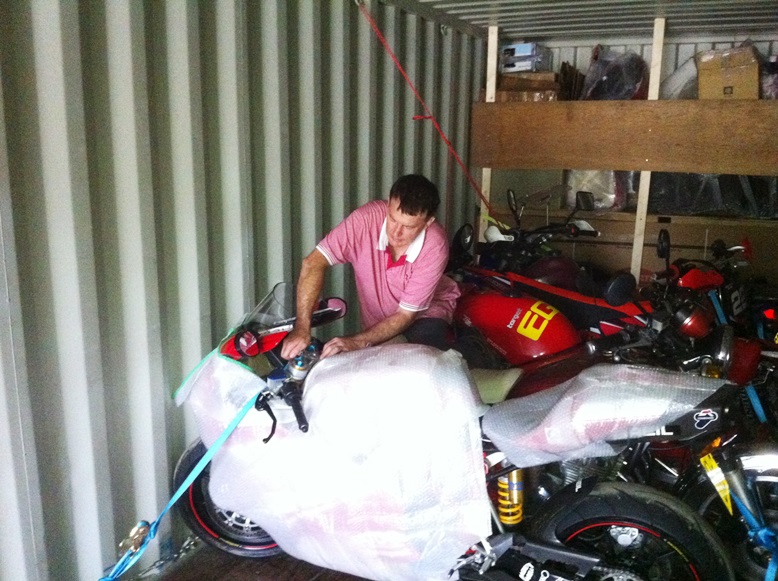
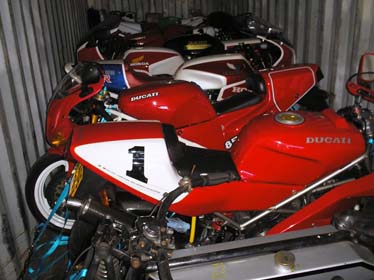
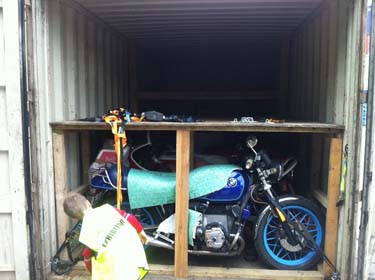
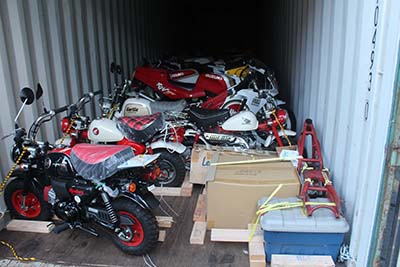
Containers are opened & unloaded by RaiderMoto.com staff; we walk each bike through the entire Customs & Quarantine process.
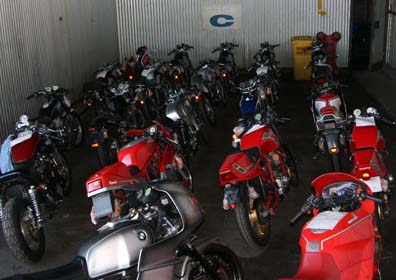

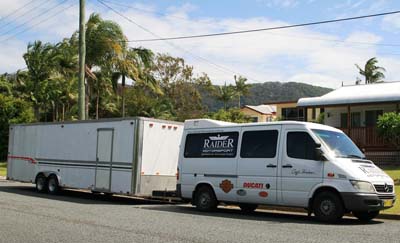
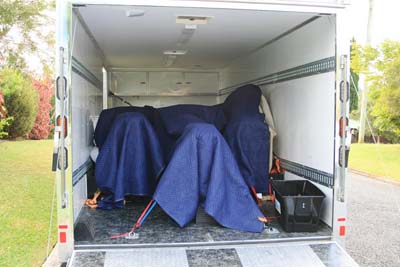
Customers can collect their bikes from the the Port, or RaiderMoto.com can deliver in a secure weather-proof environment.







